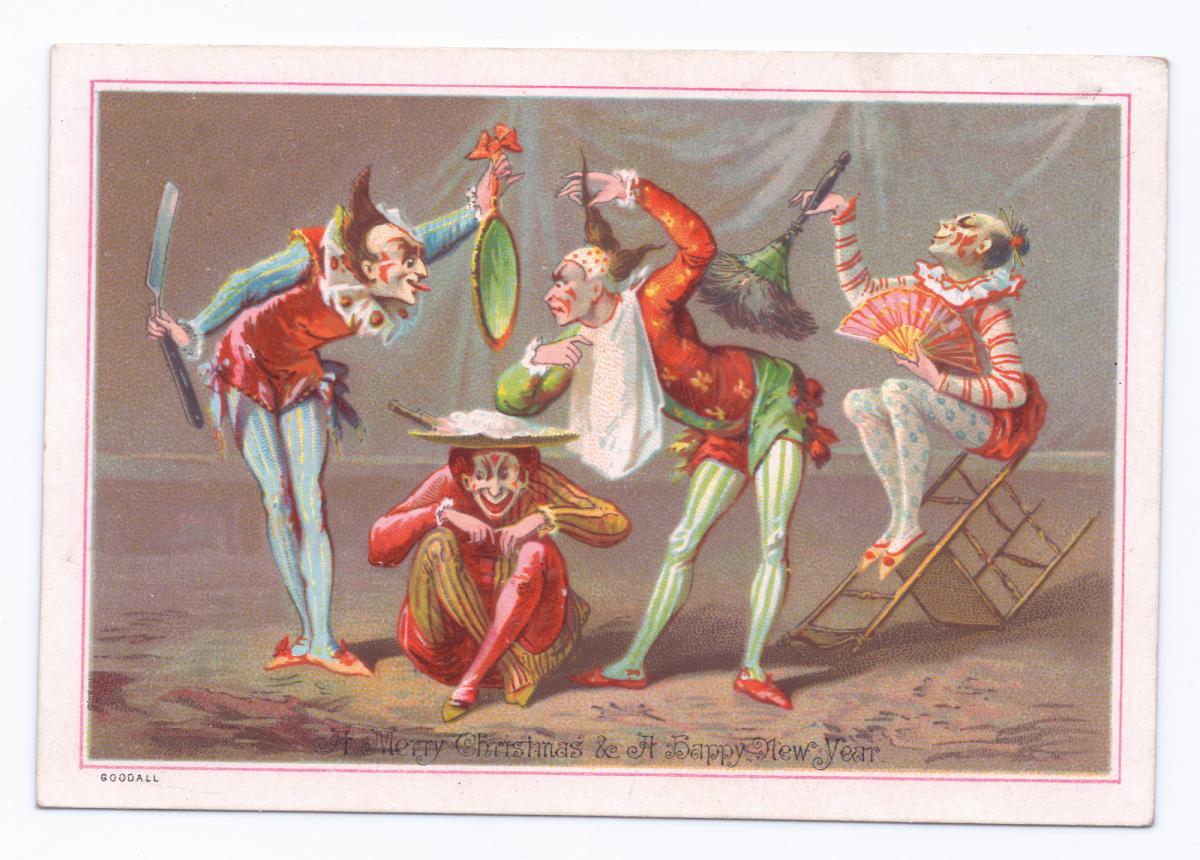This wonderful Cornish workshop and museum is dedicated to the legacy of studio pottery trailblazer Bernard Leach
From Bacchus to Buttons: Christmas pantomime
From Bacchus to Buttons: Christmas pantomime
22 Dec 2019
It’s panto season and rehearsals are in full swing. Arts Society Lecturer Giles Ramsay – an expert on the subject – goes behind the curtain on the world of dames and delightful misrule.
 Bridgeman Images
Bridgeman Images
What are the origins of the word ‘pantomime’?
The word stems from the Greek ‘pan’ meaning ‘all’ and ‘mimos’, which translates as ‘to imitate’. Although our pantomime today is a cacophony of noise, it was originally a form of dance drama in which actors played the parts by means of hand and body movements, accompanied by singing or music. There was no talking.
Is it true that panto has been 2,500 years in the making?
There is certainly a through line from ancient Greece to The Hackney Empire. A founder of the genre of panto could be Bacchus (Dionysos). As god of wine, he ‘allowed’ drinking to the point of frenzy. There is a human need to ‘let it all out’ and, through the transformative power of the chaos that can result, we then appreciate the order that follows. The Greek Bacchanalia and Satyr plays (the latter a tragic-comedy with cathartic, comedic burlesque) develop into the Roman Saturnalia – a festival that fell between 17 and 23 December, where norms were reversed. Sounds familiar? Then there was the medieval Feast of Fools, with its cross-dressing Lords of Misrule (a precursor to our Dame?), the mummers, with their disguise and dance, and, importantly the 16th-century Italian travelling street theatre, the Commedia del Arte, with its Harlequin and buffoonery. Commediaspread from Europe to Britain and was key in the development of our pantomime. All these share that element of chaos, then order, acting as a joyous pressure valve for the human spirit.
When did the British panto, as we know it, start?
In March 1717 John Weaver staged a dance drama at Drury Lane called The Loves of Mars and Venusbilled as: ‘A dramatic entertainment of dancing attempted in imitation of the pantomimes of the ancient Greeks and Romans.’ A riotous success, it was picked up by John Rich, a dancer and actor-manager, who had created the Harlequin style character of Lun (short for Lunatic), whose escapades transfixed audiences throughout the first half of the 18th century. Rich called these entertainments ‘pantomimes’. David Garrick, Rich’s arch rival, soon followed in staging these commercially successful ‘Harlequinades.’
Who are the lead figures in panto history?
Three stand out for me. The first was the clown Joseph Grimaldi (1778–1837) who, through comic genius, squeezed out the figure of Harlequin and pushed his own creation of ‘clown’ centre stage. He introduced a recognisable precursor of our pantomime dame, with his performances of Mother Goose and Dick Whittington’s mother. It was a popular comic innovation, but let us not forget that the Nurse in Romeo and Juliet was originally played by a man in a frock! Then there was Augustus Harris (1852–1896), manager of Drury Lane Theatre, who drew all the popular elements of Harlequinades and pantomimes together and created the format that has survived, pretty much, to the present day. And thirdly, George Wild Galvin (1860–1904) who, under his stage name of Dan Leno, set the gold standard for all subsequent pantomime dames.
Tell us something that we might not know.
We think of slapstick as synonymous with pantomime, but did you know know that there was an actual slapstick? John Rich gave his Harlequin one, a bat made of wood, which Harlequin would hit against the scenery, knocking down hinged flaps, activating scenery changes in the chase scene.
Giles Ramsay is an Arts Society Accredited Lecturer; his talk is called Pantomime: a very British Feast
About the Author
The Arts Society
JOIN OUR MAILING LIST
Become an instant expert!
Find out more about the arts by becoming a Supporter of The Arts Society.
For just £20 a year you will receive invitations to exclusive member events and courses, special offers and concessions, our regular newsletter and our beautiful arts magazine, full of news, views, events and artist profiles.
FIND YOUR NEAREST SOCIETY
MORE FEATURES
Ever wanted to write a crime novel? As Britain’s annual crime writing festival opens, we uncover some top leads
It’s just 10 days until the Summer Olympic Games open in Paris. To mark the moment, Simon Inglis reveals how art and design play a key part in this, the world’s most spectacular multi-sport competition



